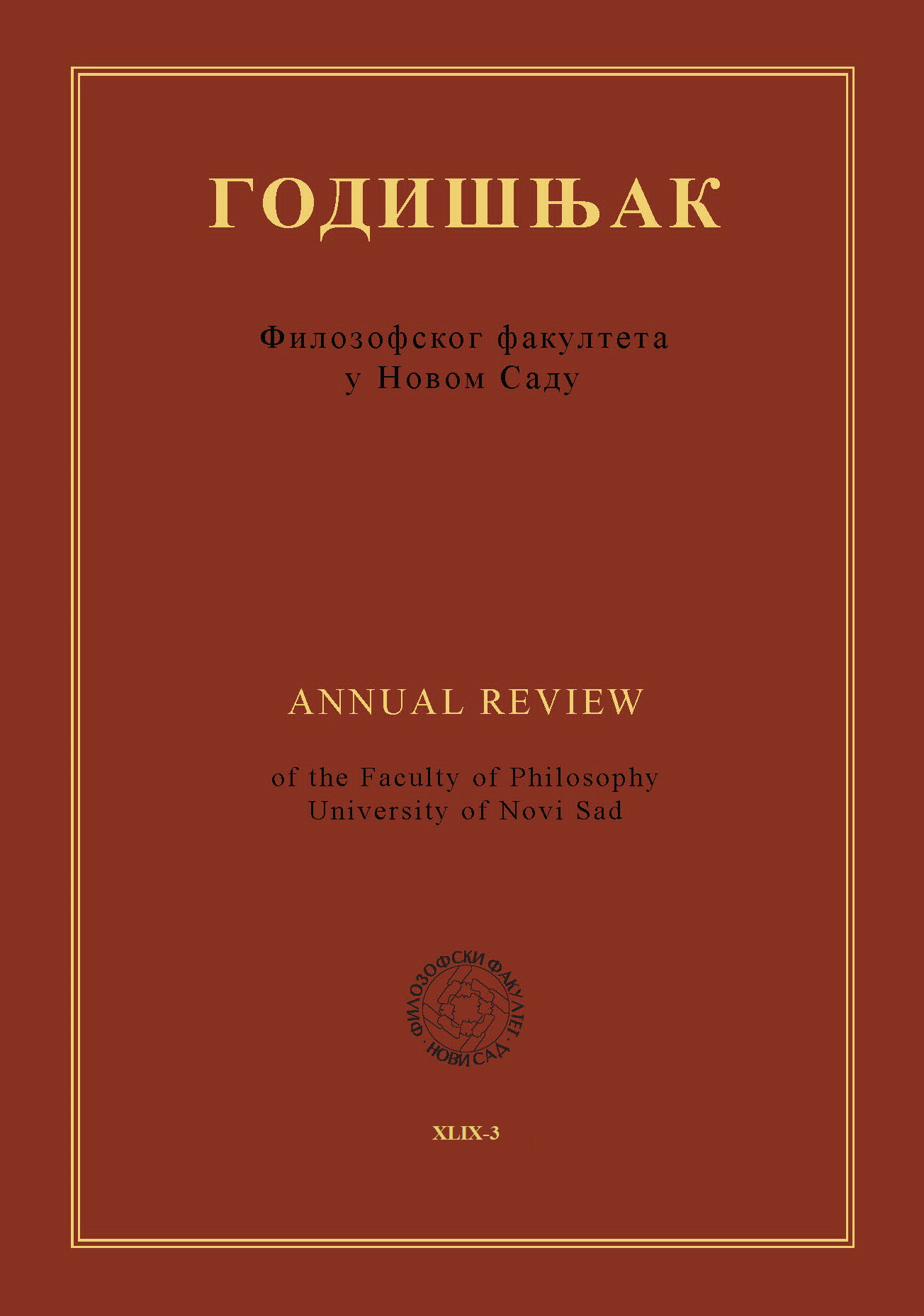LE FUNZIONI DISCORSIVE E SOCIALI DELLE CONDOGLIANZE E DELLE CONGRATULAZIONI NEL DISCORSO DIPLOMATICO DEL MEDIOEVO
Главни садржај чланка
Сажетак
In questo contributo ci poniamo come obiettivo di analizzare aspetti dell’espressione delle condoglianze e delle congratulazioni nel discorso diplomatico del Medioevo. Più precisamente, analizziamo la manifestazione di questi due atti linguistici in un corpus epistolare redatto a Ragusa nella prima metà del Quattrocento. Per il contributo prendiamo in considerazione le lettere in cui si manifestano questi due tipi di atti linguistici. L’ipotesi primaria della ricerca è che le espressioni delle condoglianze e delle congratulazioni appartengano a un apparato di schemi di comunicazione diplomatica e che rappresentino un rituale sociale e politico che ha per obiettivo il mantenimento delle relazioni diplomatiche. Per verificare la veridicità dell’ipotesi, abbiamo condotto un’analisi qualitativa dei testi selezionati. Ossia, abbiamo analizzato gli aspetti strutturali e sociali della realizzazione degli atti. A tal scopo, abbiamo adattato la teoria degli atti linguistici di Austin (1962) e di Searle (1969, 1976) unitamente alle teorie sulla cortesia di Leech e di Brown e Levinson (1987). Dall’analisi si evince che le condoglianze e le congratulazioni compiono un ruolo sociale e diplomatico che si manifesta nel mantenimento delle buone relazioni e la cui sincerità è dubbiosa. Future ricerche nel campo concerneranno l’analisi di un corpus più largo e di altri atti linguistici per individuare altre specificità del discorso diplomatico dell’epoca e dell’ambiente.
Downloads
Детаљи чланка
Референце
Austin, J. L. (1962). How to Do Things with Words. Oxford: Oxford University Press.
Banfi, E. (2017). Italiano e altre varietà italo-romanze in Europa e nel Mediterraneo nel secolo XIX. Firenze: Cesati.
Bertucelli Papi, M. (2000). Is a diachronic speech act theory possible?. Journal of Historical Pragmatics, 1, 57–66. DOI: https://doi.org/10.1075/jhp.1.1.06ber
Brown, P. & Levinson, S. (1987). Politeness: Some Universals in Language Usage. Cambridge: Cambridge University Press. DOI: https://doi.org/10.1017/CBO9780511813085
Camargo, M. (2006). Ars dictaminis. In Sloane, T. O. (2006). Encyclopedia of Rhetoric. Oxford: Oxford University Press. 60-61.
Dardano, M. (2005). Nuovo manualetto di linguistica italiana. Bologna: Zanichelli.
Elwood, K. (2004a). I’m so sorry: A cross-cultural analysis of expressions of condolence. The Cultural Review, 24, 101–126.
Elwood, K. (2004b). “Congratulations”: A cross-cultural analysis of responses to another’s happy news. The Cultural Review, 25, 355-386.
Filipović, E. (2017). Bosansko kraljevstvo: Historija srednjovjekovne bosanske države. Sarajevo: Mladinska knjiga.
Havrylyshyn, O. & Srzentić, N. (2015). Institutions Always 'Mattered': Explaining Prosperity in Mediaeval Ragusa (Dubrovnik). New York: Palgrave Macmillan. DOI: https://doi.org/10.1057/9781137339782
Issacs, E. A. & Clark, H. H. (1990). Ostensible invitations. Language in Society, 19(4), 493-509. DOI: https://doi.org/10.1017/S0047404500014780
Jacobs, A. & Jucker, H. A. (1995). The Historical Perspective in Pragmatics. In Jucker, H. A. (1995). Historical Pragmatics. Amsterdam/Philadelphia: John Benjamins. 3-33. DOI: https://doi.org/10.1075/pbns.35.04jac
Jucker, H. A. (2000). English historical pragmatics: Problems of data and methodology. In Di Martino, G. & Lima, M. (2000). English diachronic pragmatics. Napoli: CUEN. 17-55.
Jucker, A. H. (2008). Historical pragmatics. Language and Linguistics, 2/5, 894–906. DOI: https://doi.org/10.1111/j.1749-818X.2008.00087.x
Lalić, A. (2022). Modulazione delle congratulazioni in un corpus epistolare del Medioevo. Italica Belgradensia 2022, 1, 167-184. DOI: https://doi.org/10.18485/italbg.2022.1.9
Leech, G. (2014). The Pragmatics of Politeness. Oxford: Oxford University Press. DOI: https://doi.org/10.1093/acprof:oso/9780195341386.001.0001
Makri-Tsilipakou, M. (2001). Congratulations and Bravo!. In: Bayraktaroğlu, A. & Sifianou, M. (ed.) (2001). Linguistic politeness across boundaries: the case of Greek and Turkish. Amsterdam/Philadelphia: John Benjamins. 137-176. DOI: https://doi.org/10.1075/pbns.88.07mak
Morady Moghaddam, M. (2012). Discourse Structures of Condolence Speech Act. Journal of English Language Teaching and Learning, 10, 105-125.
Mwihaki, A. (2004). Meaning as use: A functional view of semantics and pragmatics. Swahili Forum, 11 (1), 127-139.
Sarri, A. (2018). Material Aspects of Letter Writing in the Graeco-Roman World: 500 BC – AD 300. Berlin/New York: Mouton de Gruyter. DOI: https://doi.org/10.1515/9783110426953
Searle, J. R. (1969). Speech Acts: An Essay in the Philosophy of Language. Cambridge: Cambridge University Press. DOI: https://doi.org/10.1017/CBO9781139173438
Searle, J. R. (1976). A Classification of Illocutionary Acts. Language in Society, 5, 1-23. DOI: https://doi.org/10.1017/S0047404500006837
Searle, J. R. (1979). Expression and Meaning Studies in the Theory of Speech Acts. Cambridge: Cambridge University Press. DOI: https://doi.org/10.1017/CBO9780511609213
Tadić, J. (1935). Pisma i uputstva Dubrovačke Republike. Beograd: Srpska kraljevska akademija.
Tasso, T. (1959). La letteratura italiana: storia e testi. Volume 22. Torquato Tasso - Prose. Verona: Riccardo Riccardi editore.
Zovko, V. (2014). Metode i tehnike komunikacije između vlasti i poslanika u pregovorima oko proširenja dubrovačkih granica. Anali Dubrovnik, 52(1), 21–49. DOI: https://doi.org/10.21857/9e31lh40qm





